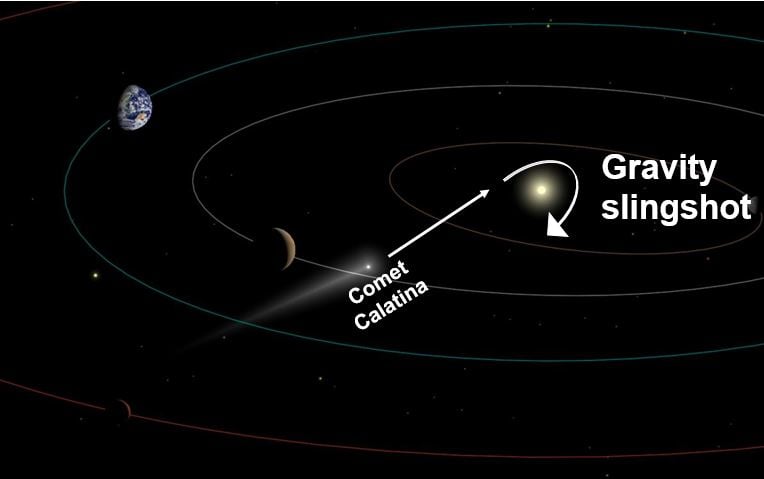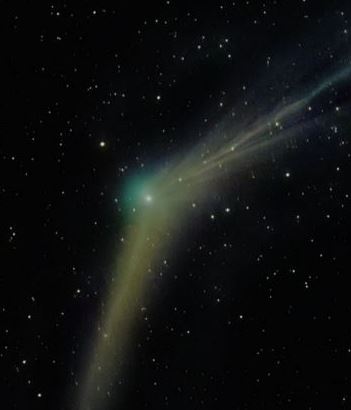Comet Catalina, known technically as nC/2013 US10, will be visible for just a few days in the Northern Hemisphere as it passes Earth by, in what scientists say is its first orbit of the Sun before it is gone forever – so make the best.
For star watchers in the northern hemisphere, the comet’s closest flyby will be on 17th January 2016, when it will be about 100 million kilometres (62 million miles) from Earth. Experts say it will be visible with the naked eye on a clear night with no pollution.
Then it will start moving away but will be observable with binoculars for about a month.
 This photograph of Comet Catalina made NASA’s Astronomy Picture of the Day on December 15th. (Image: apod.nasa.gov)
This photograph of Comet Catalina made NASA’s Astronomy Picture of the Day on December 15th. (Image: apod.nasa.gov)
Between March and mid-October 2016, Comet Catalina was visible only to sky gazers in the southern hemisphere.
Catalina was discovered on Halloween night
The comet was discovered on 31st October 2013 (Halloween night) by the Catalina Sky Survey, hence its name. The Catalina Sky Survey scans the night sky from an elevation of over 8,000 feet, searching for hazardous NEOs (near-Earth objects) that could pose a danger to our planet.
Catalina is an enormous mass of ice and rock about 20 kilometres (12.4 miles) in diameter. It came from the Oort Cloud, a faraway shell that surrounds our entire Solar System that extends 13,950,000,000,000 miles from the Sun.
According to telescopes.com, comet Catalina is on a one-million-year journey toward the Sun from the Oort Cloud. Astronomers believe that hundreds of thousands of years ago, another celestial object knocked Catalina out of its orbit, sending it in the direction of the Sun.
 Comet Catalina was pulled around by the Sun’s gravity and then flung out like a slingshot. It will continue hurtling through space out of our Solar System.
Comet Catalina was pulled around by the Sun’s gravity and then flung out like a slingshot. It will continue hurtling through space out of our Solar System.
Catalina will go and will never come back
Catalina rounded the Sun in November – its gravity has flung the comet back like a slingshot. It will continue whizzing into space and out of our Solar System – never to be seen (by humans) again.
Comets are basically giant balls of ice and rock that orbit the Sun. They are leftovers from when our Solar System was formed.
As they approach and get near the Sun, they start spewing gas and dust. This gas and dust form a tail, which always points away from the Sun.
The Sun’s heat and radiation produce a wind called Solar Wind. When a comet gets near it starts to melt.
The Greek philosopher Aristotle (384-322 BC) gave them the name comet, which in Greek means ‘hair of the head’. The astronomical symbol for comets is ☄.
National Geographic offers the following advice for people wanting to see the comet:
“To hunt down comet Catalina, face southeast about an hour before local sunrise. The comet will be some 15 degrees above the horizon, about equal to the span between your pinky and index fingers held at arm’s length. The comet will be found within the constellation Virgo, the maiden.”
“Look for a small, fuzzy patch of light through your binoculars. Small telescopes may even show off hints of two splayed tails. Backyard amateur astrophotographers have been snapping amazing close-up images of the comet that clearly show these tails of gas and dust pointing away from the sun.”
Interesting Related Article: “Giant comet that could wipe us out hits Earth every 40000 years“

